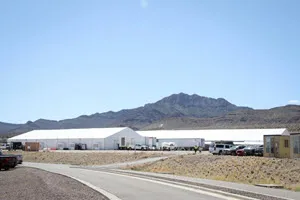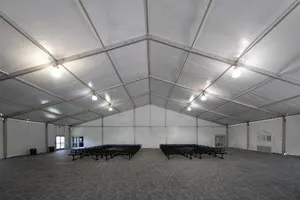To ease the overwhelming demand on U.S. Customs and Border Protection personnel, facilities and operations brought on by the unprecedented increase in the number of families and children arriving at the Southwest Border, the agency stood up two temporary steel-framed shelters. The structures, in Donna and El Paso, Texas, have been providing housing for incoming migrants since May 4 to help address the urgent need for more space.

Texas. Photo by Jerry Glaser
“Southwest Border-wide, there is a more than 400 percent increase (since fiscal year 2018) in family apprehensions,” said U.S. Border Patrol Associate Chief Matthew Roggow who helped coordinate the projects from Washington D.C.
The surge is overcrowding Border Patrol facilities and agents are stretched thin as they encounter, process and care for families, unaccompanied children, and single adults, extra responsibilities that detract from their law enforcement duties.
“Rio Grande Valley and El Paso sectors are encountering the highest number of family units and are more geographically challenged sectors,” he said. The new facilities will allow Border Patrol agents to expedite, process, and transport the migrants to Immigration and Customs Enforcement or Health and Human Services, Roggow explained.
The new weatherproof, climate-controlled structures are approximately 100 feet wide by 400 feet long and made from vinyl, a soft-sided fabric, hence the name soft-sided facility. The lodging provides areas for eating, sleeping, recreation, and personal hygiene for up to 500 people. There are also separate areas for processing people and medical evaluations, as well as showers, chemical toilets and sinks, laundry, trailers, sleeping mats, kitchen equipment, personal property storage boxes, office space, interior and perimeter closed circuit television, lockers, security, and power.
Eric Eldridge, the director of CBP’s Office of Facilities and Asset Management’s Facilities, Management & Engineering, led the CBP team that oversaw the soft-sided facility stand-up. Their task was to ensure an elevated standard of care in response to the current humanitarian crisis.
“Think about the migrant [who] just traveled hundreds of miles, at the very least, in less than humane conditions,” he said. “What CBP is doing is providing a safe environment with a level of comfort, processing them, and moving them through the system as quickly as possible. CBP is committed to providing the most effective, efficient, and humanitarian solution possible, in as little time as possible.”

Texas. Photo by Jerry Glaser
Aliens in custody have mats, blankets, hot meals and snacks, drinking water, diapers, wipes, clothing sets, and hygiene kits. All incoming migrants receive a medical evaluation upon arrival, and each structure always has medical resources available.
"If something is discovered in the medical screening, the individual will be taken to the hospital immediately,” Roggow said.
Every day, Border Patrol agents perform nearly 70 medical care transports and, along with CBP officers, spend
more than 121,000 hours in hospitals monitoring subjects in custody.
At these facilities, the co-location of resources, such as medical help, food, laundry, and showers, allows the Border Patrol to accomplish all of these services in one location within the sector.
“The reality is our facilities were built for single adults. They weren’t built for the current demographics that we’re detaining,” Roggow said. Having all these resources within the new facilities allows for more efficient care for arriving migrants and reduces the demand on agents to provide transportation, Roggow added.
Making that happen required a herculean effort, and Eldridge and his team had just 30 days. This meant coordinating with offices across the agency to complete environmental assessments, award contracts for approximately 50 different services provided in each structure, and many overtime hours.
“Once given the OK to move forward, we all had the approach and attitude that we have to get this up as fast as possible. So, it's been seven days a week. Every team member has been committed to that,” Eldridge said. The team’s efficiency allowed them to complete the facility stand up eight days ahead of schedule.
Eldridge explained the facilities are the first of three projects to ease the agency’s urgent requirement for additional space. “The soft-sided [structure] is the immediate solution. CBP is also working an intermediate solution of an 800-capacity modular structure in El Paso, in addition to the planning for a permanent centralized processing center with a capacity of up to 2,000 aliens in El Paso Sector.”
Both Eldridge and Roggow recognize the project is just the first step in a long road ahead for their teams and for the agency.
“Aside from this being a humanitarian crisis, it's also a border-security crisis,” Roggow said. “But this is not too big that it can't be solved.”
“We've got to take what we're learning here, and from other crises, and apply those lessons to build a model of readiness to address future challenges,” Eldridge said.
“We need to always be prepared to provide material solutions to CBP to ensure the officers in the field have what they need to operate safely and efficiently.”

